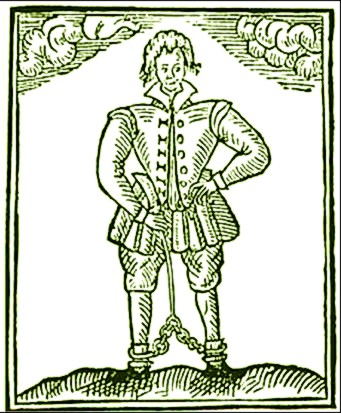
Clif Mason is an English professor and a poet with four collections published. I reviewed his remarkable debut full-length collection, Knocking the Stars Senseless, here and here (part II of the review). Since then, we've been emailing back and forth the following extensive interview on the art, craft life and development of the poet.
This interview is in four parts:
What are the critical pieces of a
good poem?
For reasons I’ve already elaborated, sound and image. To
these I would add line breaks and enjambment, which allow lines and stanzas to
gain in power and meaning through the special intentionality and emphasis they
embody. A poem comes into being when all of these elements become unified and
coherent—mutually cognizant and supporting—thereby gaining its own unique
momentum and force. That is to say, when the poem becomes a living thing, with
its own circulatory system and tissues and organs and networks of nerves.
As I pointed out in the review, you
do extensive revisions, changing not only the poems drastically, but even what
poems go in. How do you approach revision in your poems? In your three newest books?
Poems can fail in a “thousand thousand” ways, to paraphrase
Shakespeare. The desire to revise comes from an acute awareness of those
failures. For me, as for so many others, I’m sure, the ecstasy of composition
is often followed—the next day, the next month, or the next year—by dismay,
disappointment, and sometimes dejection. Being of a naturally sanguine
temperament, I don’t care to live for long in dejection, so I set out swiftly
to revise. I give myself enormous freedom in the revising process. I recast
long-line poems in o short-line ones, and sometimes back into different long
lines. I recast formal poems as free verse and sometimes as prose poems.
There’s something I like about hiding the original formal nature of a poem
inside prose. I intermix other fragments of a like gesture and sensibility into
a poem, and as I’ve said, I combine two, three, or even more poems together. I
let these new versions sit for a time and then I revise them as ruthlessly as I
did the original poems from which they grew. I do the same thing when
fashioning a book. In a sense, the book is a long poem, and the individual
poems its lines and stanzas. At the Colrain Poetry Manuscript conferences that
I attended in 2012 and again in 2014. I had great teachers—Carmen Giménez
Smith, Jeffrey Levine, Martha Rhodes, and especially Joan Houlihan, the Colrain
founder and director. From these mentors I learned to place my best poems at
the beginning of a book and at the end, and then to demand that the poems in
the middle meet that standard of quality. In other words, every poem has to
matter in a book; each poem has to earn its place. Of course, I continually
reappraise my poems and shift my perception of which of them is “best.” I also
tend to tie groups or sections of poems in a book together by theme. And as
someone who is addicted to variety, I try to create a mixture of poems in
different forms and of different lengths throughout a collection. One can, of
course, revise a manuscript forever, moving poems in and around and out and
sometimes in again. At some point, one intuits that one has to stop and accept
that the book has found what is perhaps its best possible form, given whatever
limitations I have as a writer. This was true of Knocking the Stars
Senseless and of my chapbook, Self-portraits in Which I Do Not Appear.
The Book of Night & Waking, my book-length poem, is different in
that it tells a magical realist story of the protagonist, who, despairing
because his country is entangled in war and blackened with grief, sets out to
walk to Antarctica. Along the way, he experiences both great evil (one of the
sections is based on the femicides of Ciudad Juárez, Mexico) and great beauty.
The poem is ultimately an epic love poem, as he connects magically with his
wife (who is not accompanying him) along the way and reunites with her finally
in Antarctica. I found places in the journey for a few poems that had been
published separately (though I revised and re-shaped them for the purpose), but
much of the book is an original composition. This book is also unique in that
it is composed entirely in spaced broken lines that flow down the page.
I know you have interest in fiction
as well. Do you have other books you're working on now--poetry, fiction or
otherwise?
Yes, I’ve completed another full length collection, whose
working title is Tell Me a Story. I’ve selected poems from it to send
out also as a chapbook (provisionally titled Dream Outside of Time). I’m
also taking the draft of a dark fantasy novel that I wrote back in 2010 and
completely rewriting it, based on new conceptions of its narrative
possibilities and new visions of the characters and of the world they inhabit.
I’ve also started writing another novel that will be set in a parallel
universe, on an Earthlike planet called Oceanus, under a black star called
Obsidian. The protagonist of the first novel, a dark priestess named Wing, is a
major character in the second. I love Chinese wuxia films, and I am
planning to include wushu martial arts in the second book, as well as
other fantastical elements.
How many collections do you have out
now and from where? What has yet to be released? Can you describe them for us?
These are my collections: From the Dead Before, Knocking
the Stars Senseless, Self-portraits in Which I Do Not Appear, and The
Book of Night & Waking. The first is no longer in print, as Lone Willow
Press ceased to exist upon the death of Fred Zydek. From the Dead Before
consists of fairly straightforward poems, often about the natural world. The
other three employ natural imagery but are often written, as I’ve noted, in
surrealist and magical realistic modes. Tell Me a Story resembles them
in this way, and one of its sections is composed of magical realist stories. I
have a certain amount of uncollected work from my first 30 years as a writer.
Those poems haven’t fit into the schemes of the collections I’ve fashioned. Should
there ever be a Collected Poems—which is purely hypothetical at this
point—they might find a place after all.




